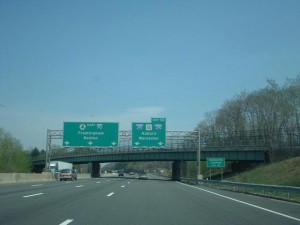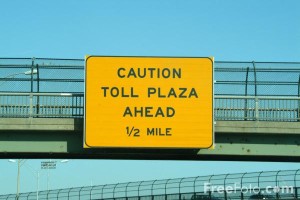The Mass Pike: Not Taking Its Toll
Yesterday, I posted some thoughts about the impact of the almost drastic reduction in the number of flights being offered by U.S. airlines due to the high cost of fuel. It’s causing inconvenience and higher expense for travelers who are flying less. That’s resulting in a serious loss of revenue for airports around the country … and that will, in turn, mean further drain on tax dollars.
The cost of fuel is affecting us as motorists, too, isn’t it? We’re driving less. A lot less. And, like the ripples on a pond, there are more and more effects being felt from that, too.
 Take, for example, the dilemma it’s posing for the Massachusetts Turnpike Authority. The Mass Pike, as it’s known around New England, is 138 miles long and runs east-west across the state, from Boston’s Logan Airport to the New York State border.
Take, for example, the dilemma it’s posing for the Massachusetts Turnpike Authority. The Mass Pike, as it’s known around New England, is 138 miles long and runs east-west across the state, from Boston’s Logan Airport to the New York State border.
But to save on gasoline, people are driving less, especially at higher speeds and over longer distances. And the trend is affecting revenues for the Massachusetts Turnpike Authority. There were 4.7 percent fewer toll transactions for the month of June compared to June last year. For the month of August, that figure was 6.75 percent. And fewer cars mean less revenue for the Authority.
 And therein lies the rub: The Mass Pike is operated and maintained from revenues that come from tolls paid by motorists. But if revenues from tolls continues to drop, there won’t be enough money to cover the cost of maintaining the highway. Short term solution: tax dollars.
And therein lies the rub: The Mass Pike is operated and maintained from revenues that come from tolls paid by motorists. But if revenues from tolls continues to drop, there won’t be enough money to cover the cost of maintaining the highway. Short term solution: tax dollars.
Once again, however, there is what should be an obvious long term answer: A comprehensive transportation policy involving federal, state and local governments, coordinated by the feds. And it should integrate travel options that include air, highway and rail.
Or are we going to continue doing nothing because of an ideology that says government is always the problem, never the solution?




I’ve got a serious problem with statements along the lines that declining traffic on airlines and toll roads require more tax dollars to support them.
Airlines have always been corporate welfare bums that skillfully dumped their infrastructure costs on the hard-working taxpayers. While, of course, Amtrak was required to pay for the full costs of all of its infrastructure.
The famous exchange between David Gunn and John McCain on this issue rises to mind.
Now is an excellent time to derail the gravy train and sell off the airports whose traffic is down. If the airlines want to buy them, then they can – in fair and open bidding against real estate developers and everyone else.
After the airlines pay for their infrastructure costs, then we can start talking about making them pay for the costs of their pollution, particularly greenhouse gas emissions.
My guess is we’ll continue to have a fragmented array of transportation “systems” owing to lobbyists and the compliant stooges we elect to the US Congress.
But that’s just me…